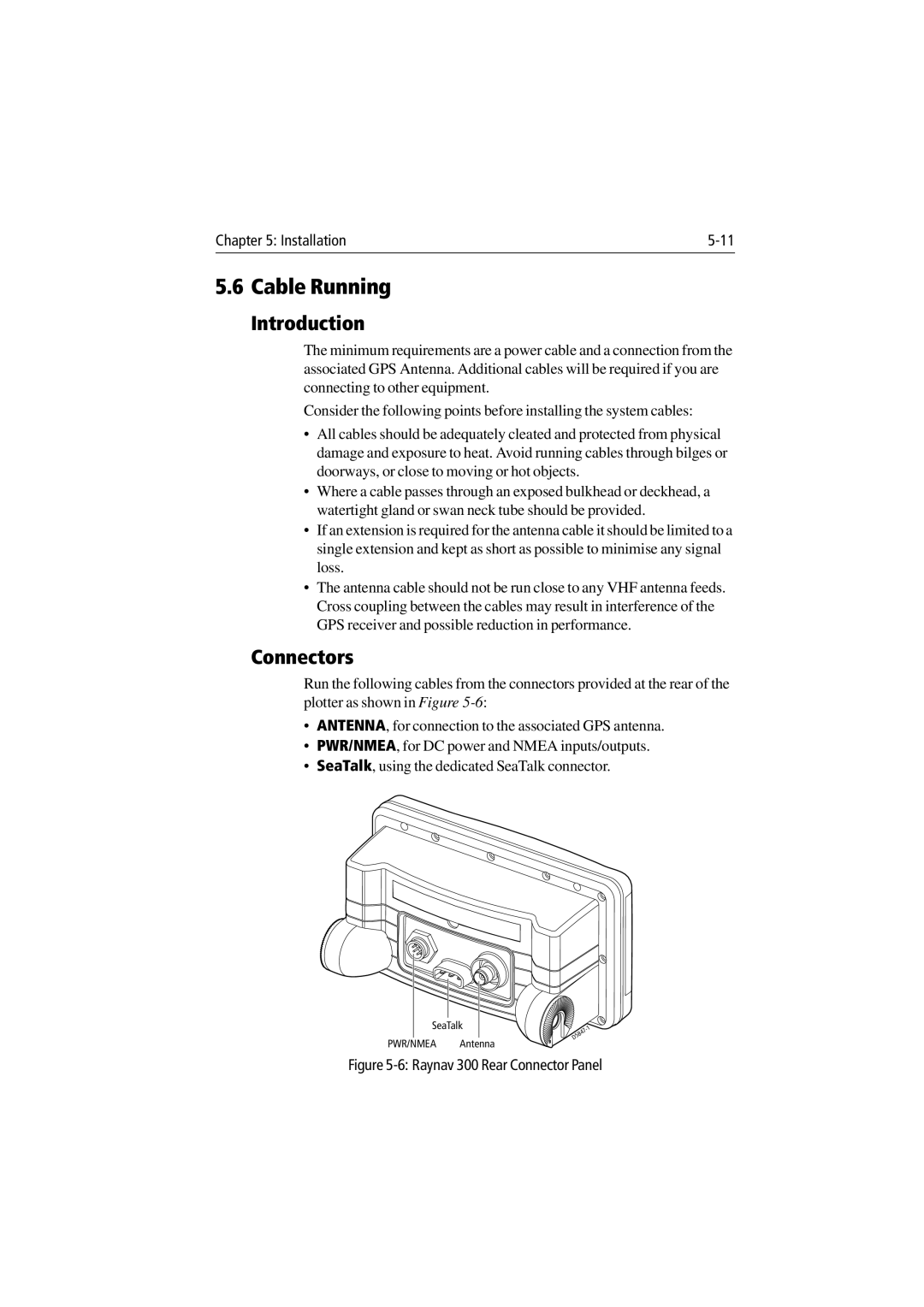
Chapter 5: Installation |
5.6Cable Running
Introduction
The minimum requirements are a power cable and a connection from the associated GPS Antenna. Additional cables will be required if you are connecting to other equipment.
Consider the following points before installing the system cables:
•All cables should be adequately cleated and protected from physical damage and exposure to heat. Avoid running cables through bilges or doorways, or close to moving or hot objects.
•Where a cable passes through an exposed bulkhead or deckhead, a watertight gland or swan neck tube should be provided.
•If an extension is required for the antenna cable it should be limited to a single extension and kept as short as possible to minimise any signal loss.
•The antenna cable should not be run close to any VHF antenna feeds. Cross coupling between the cables may result in interference of the GPS receiver and possible reduction in performance.
Connectors
Run the following cables from the connectors provided at the rear of the plotter as shown in Figure
•ANTENNA, for connection to the associated GPS antenna.
•PWR/NMEA, for DC power and NMEA inputs/outputs.
•SeaTalk, using the dedicated SeaTalk connector.
SeaTalk
PWR/NMEA Antenna
